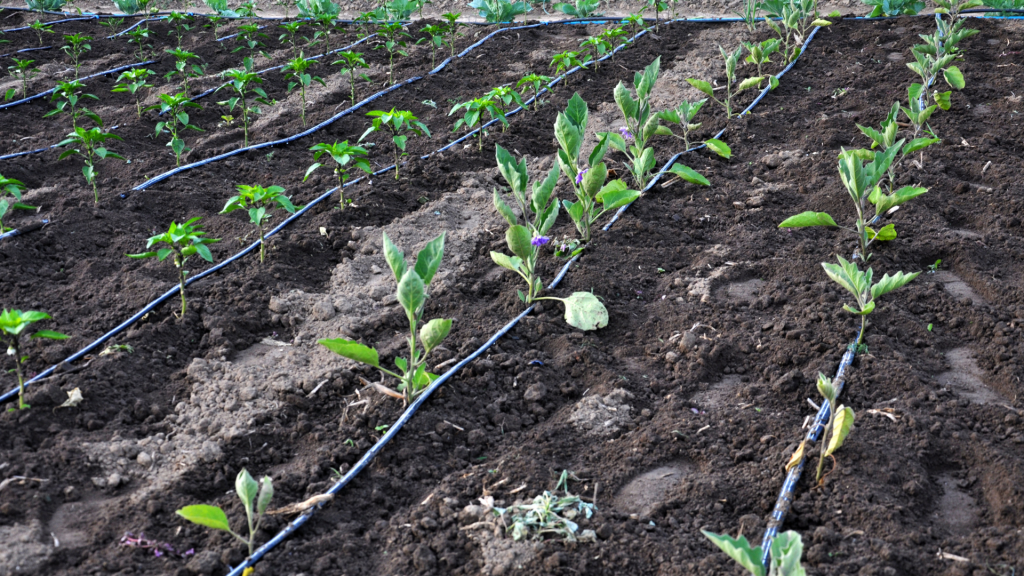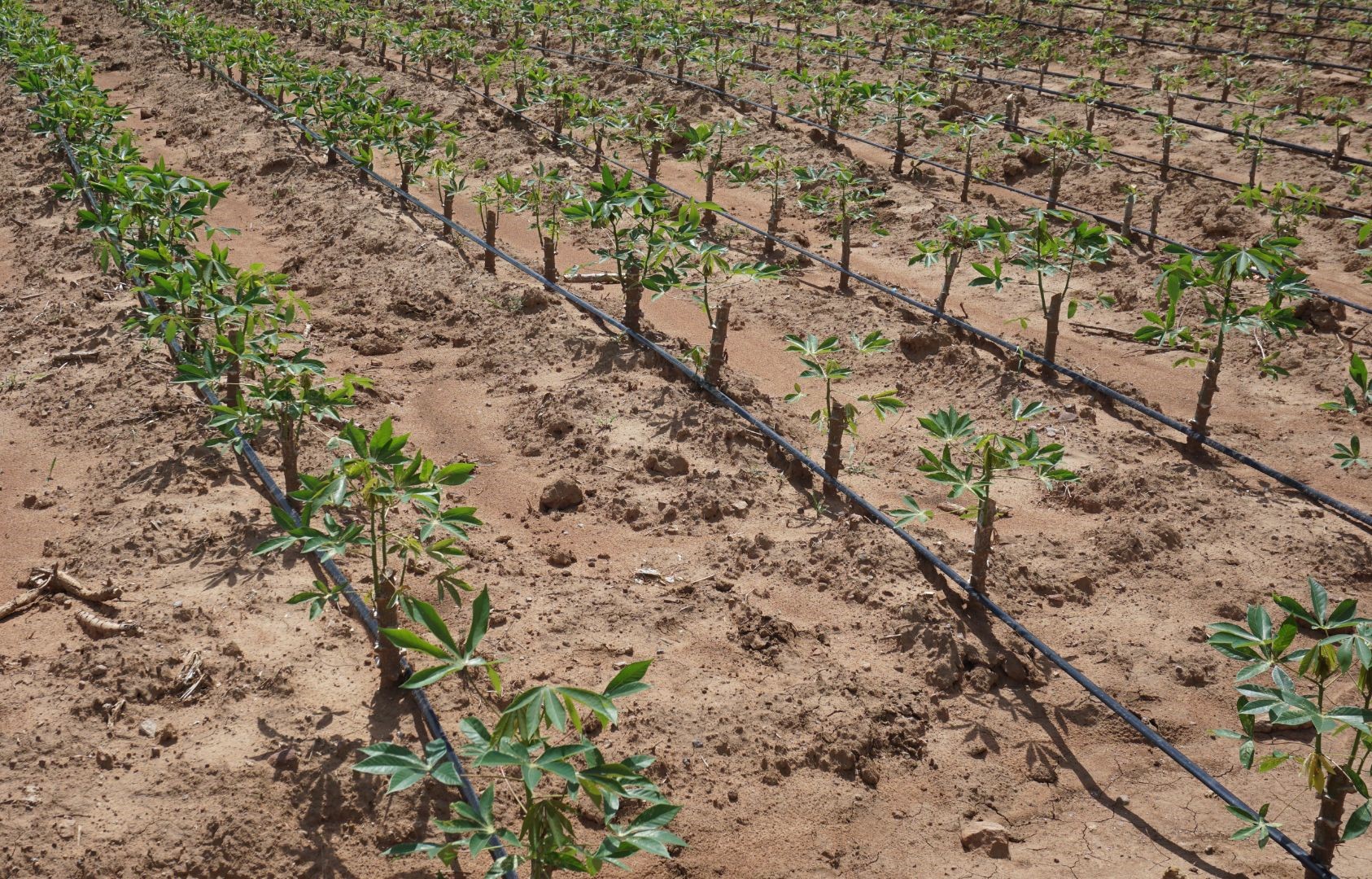How drip irrigation can support global food security
The Risk of Food Supply-Demand Imbalance
The world’s progress in reducing hunger and malnutrition since the 1990s is one of the signature achievements of the modern era. However, this progress remains incomplete and fragile, given the deeply embedded demographic and environmental challenges. As things stand currently, we may not have enough resources to feed everyone by 2050. Agricultural output must expand by over 50 percent before mid-century to meet projected food demand based on population growth, dietary shifts, and increasing biofuel usage. This target appears extremely arduous considering how climate change threatens to impact production capacity in critical breadbaskets negatively.
Seasonal Variability and Extreme Weather Disrupt Production Cycles
Climate scientists forecast greater climate variability with shifts in precipitation patterns and rising temperatures this century. Intensifying periodic droughts and regular heatwaves shall hamper crop cultivation across latitudes. Such fluctuations strain conventional agriculture since correctly timing planting/harvesting cycles is vital. Increasingly irregular rainfall also limits how much the existing freshwater storage infrastructure can offset dry spells. More frequent extreme weather events like storms, floods, and unseasonal frosts cause massive damage to crops and farmlands. Long-term climate shifts gradually make whole regions warmer or drier, undermining traditional agricultural viability and forcing adaptation investments. Overall, climate change directly threatens to realize sufficient production gains using 20th-century techniques to satisfy 21st-century food requirements.
The Reduction of Water Supplies Threaten Food Security
The most dangerous impact of climate change on agriculture is creeping desertification and fast-depleting groundwater reserves. Water scarcity already affects every continent, with over 1.7 billion people living in severely water-stressed river basins today. Area equipped for irrigation cannot expand much, given aquifers and reservoirs are increasingly depleted. Still, since irrigation is essential for 40% of global crop output, shrinking reliable water access spells trouble. Rain-fed agriculture cannot compensate for falling irrigation contributions because climate variability will hamper rain-fed farms, too. Without exponentially boosting crop productivity per water unit, the world may lack adequate capacity to close intensifying food gaps sustainably.
The Irrigation Modernization Imperative
If climate change and a rising population shrink global food supply elasticity, then business-as-usual techniques will lead agriculture into crisis. The only solution is rapid, large-scale modernization that maximizes irrigation water efficiency. Drip irrigation combined with automation seems to be the most accessible and immediately deployable option worldwide. However, expanding this revolutionary solution requires overcoming adoption barriers across contexts and doubling down on further innovation.
With wise policies and ample investment in R&D, drip irrigation can spearhead a resilient food system by increasing efficiency on every farm. 
Introducing Drip Irrigation
Unlike conventional irrigation methods involving open canals/pipes/hosepipes that flood fields with water, drip irrigation comprises built-in emitters/drippers that pinpoint water application directly around plant roots. Sophisticated drip systems feature extensive plastic piping with programmable valves, real-time sensors, and AI-enabled automation. Basic drip irrigation has an excellent performance, too, and is affordable for smallholder farmers.
Origins and Proliferation
Although elementary subsurface irrigation application through porous clay pots has ancient origins, it was pioneering Israeli researchers in the 1960s who invented practical drip irrigation components using modern plastics. Refinement and product diversification by agriculture technology firms over subsequent decades made drip irrigation affordable across contexts. Currently, over 20 million hectares worldwide use a form of micro-irrigation technology. Adoption is concentrated in better-resourced developed economies and emerging giants like China and India. However, simpler drip irrigation techniques suited for small farms spread widely in Turkey, Brazil, Mexico, and parts of Africa.
Unmatched Water Savings
The primary advantage of drip irrigation is unprecedented water savings of 50-70% over conventional irrigation, with surface drip irrigation outperforming sprinklers and subsurface drip systems, delivering optimal efficiency. This allows crops to absorb applied water better by matching slow drips to uptake rates. Directly funneling occasional drops around plant roots rather than flooding entire fields decreases water losses. Moistening only the rhizosphere discourages weed growth.
Superior Yields and Resilience
Besides vast water savings, well-managed drip-irrigated fields often achieve 30-90% higher yields depending on the crop, soil, climate, etc. Targeted root zone moisture conditions are maintained consistently using automated controllers rather than fluctuating between flooding and desiccation, which is common in surface irrigation. Drip irrigation also facilitates precise fertilizer application alongside water (fertigation), avoiding nutrient leaching losses. Furthermore, drier surface exposure reduces pest and fungi proliferation risks compared to wetted foliage in standard irrigation. Cool subsurface watering saves soil organisms from intense heat while lowering crop temperature stress. Combining optimized moisture, timely fertigation, and cooler microclimate adds valuable resilience against climate extremes.
Adaptability Across Farm Scales
A notable advantage of drip irrigation is scalable deployment – from ultra-high-tech greenhouses to primitive smallholder plots. Large mechanized farms can install vast automated drip irrigation infrastructure with reagent injection, moisture sensors, and AI analytics for maximizing yields. Small subsistence farmers, too, benefit immensely despite basic manual drip irrigation kits. With micro-tubing costing just a few cents per meter and simple timers automating flow, even impoverished farmers gain more stable incomes from drip irrigation. Removing costly field leveling requirements and using gravity flow makes drip irrigation accessible for remote farms lacking power access, too. Whether high-end or bare-bones, drip irrigation enhances productivity and climate resilience across contexts.

The Central Role of Automation
Truly optimizing drip irrigation efficiency involves automating system operations using controllers and ancillary equipment. Manual control cannot adjust volumes and timings adequately in response to sensors monitoring soil moisture, plant water status, and weather. Automating via programmable timers and computerized controllers allows the adjustment of irrigation to every plot’s needs. Controllers enable scheduled fertigation, instantaneous problem detection via pressure changes, modular expansion of irrigation zones, etc. In essence, automation unlocks the dual goals of maximizing yields while minimizing water volumes used, taking drip irrigation closer to unprecedented efficiency.
Barriers to Drip Irrigation Adoption
Given the abundance of agronomic and economic benefits, the laggardly uptake of drip irrigation technology worldwide remains puzzling. Nearly 40% of global irrigation still relies on high water-guzzling methods like flood irrigation. Structural constraints along the drip irrigation value chain hinder many farmers from transitioning despite substantial incentives.
High Upfront Costs and Slow Payback Times
Foremost, purchasing and installing drip irrigation hardware is expensive, especially given the low-profit margins of smallholder agriculture in developing countries. Drip irrigation costs can exceed $2500 per hectare, which deters adoption. Loan unavailability exacerbates matters since payback periods run too long at 5-10 years for reassurance. Insufficient farmer awareness of precise long-term savings potential and technical assistance further hamper the system’s adoption.
Underdeveloped Supply Chains
Additionally, drip irrigation replacement components and specialized servicing still need to be more affordable across rural contexts in poorer countries. Unfamiliarity among local vendors/mechanics hampers maintenance, while tampering risks stay high without supervision by qualified technicians. As problems get diagnosed or fixed slowly, farmers struggle to keep drip irrigation units running optimally once procurement subsidies lapse after 1-2 years.
Water Scarcity Disincentivizes Adoption
Furthermore, with climate change straining water tables worldwide, farmers battle more acute – and expensive – droughts and unreliable rainfall. Investing in equipment like drip irrigation before securing irrigation water access seems premature, especially for impoverished farmers. Groundwater depletion also prompts governmental restrictions on new bore well permits or electricity connections for pumping water. This policy environment further chokes enthusiasm for purchasing drip irrigation gear outright initially. The struggles of early adopters to continue using drip irrigation gear optimally over time due to underdeveloped supply chains and water procurement challenges also dissuade other farmers from purchasing drip irrigation hardware.
Overcoming Adoption Barriers
For drip irrigation to enhance global food security by maximizing yields per water unit in the coming decades of climate instability, the structural bottlenecks curbing adoption must be dissolved proactively.
Cost Subsidies and Innovative Finance
Governments worldwide should prioritize subsidizing smallholder farmer transitions toward drip irrigation through grants that considerably reduce end-user costs. Blending public investments into commercial microfinance loans with deferred repayment options can make owner financing more accessible, too.
Developing Local Supply Chains
Parallel policy emphasis must foster drip irrigation supply chain development across rural spaces through vocational skilling programs and technology transfer for catalyzing local manufacturing. Strengthening last-mile servicing ecosystems is equally vital for maintenance support. Supportive Water Management Policies Forward-thinking water management policies like formalizing robust community groundwater-sharing mechanisms can combat uncertainty about irrigation water access by aligning group incentives. Governments also need encompassing water access, storage, and distribution infrastructure upgrades to sustain long-term sufficiency.
Embracing Innovation
Finally, the endless scope for enhancing efficiency must compel ongoing R&D investments into next-generation drip irrigation advances like integrating wireless sensors, breeding drought-resistant crops, discovering soil amendments to boost soil moisture retention, etc. Policy space for trialing ideas and sharing lessons remains integral.
Key Takeaways
With climate change and population growth tightening global food supply-demand balances, improving irrigation water productivity is indispensable for food security. As the world’s best irrigation method for getting ‘more crop per water drop,’ drip irrigation must be universal. Drip irrigation supports farm resilience and profitability across contexts via dramatic yet customizable water savings paired with ample scope for yield improvements. However, uptake barriers like high initial costs, inadequate maintenance ecosystems, and water supply uncertainties necessitate multifaceted policy interventions worldwide for acceleration. Blending financing support, nurturing localized supply chains, and facilitating water access can make drip irrigation universally accessible. Long-term R&D emphasis must also capitalize on endless efficiency enhancement possibilities via integrating automation. By acknowledging drip irrigation’s unmatched capabilities and committing to overcoming adoption obstacles through comprehensive measures, governments can lead agriculture sectors toward sufficient, sustainable food production even amid demographic expansion and climate change. With thoughtful interventions, drip irrigation truly holds the key to guaranteeing long-term food security worldwide.
References
- Food and Agriculture Organization reports on world hunger, irrigation, and water management: http://www.fao.org/publications
- Academic articles on the benefits of drip irrigation: https://www.sciencedirect.com/science/article/pii/S0378377417300896
- https://www.sciencedirect.com/science/article/abs/pii/S037837741930945X
- Research on barriers to technology adoption in agriculture: https://www.annualreviews.org/doi/full/10.1146/annurev-resource-100518-094206
- https://www.sciencedirect.com/science/article/pii/S0308521X16303754
- Climate change impacts on agriculture: https://www.ipcc.ch/srccl/
- Water management policies and groundwater governance: https://onlinelibrary.wiley.com/doi/10.1111/gwat.12306
- https://iwaponline.com/ebooks/book/122/Groundwater-Governance-A-Global-Framework-for-Country-Action
Further reading:
Innovative Technologies in Irrigation: The Present and Future of Water Management
Components and Types of Drip Irrigation Systems
Irrigation Management – How to Optimize Irrigation Efficiency
Types of Irrigation Systems – Which to choose depending on your needs










































































